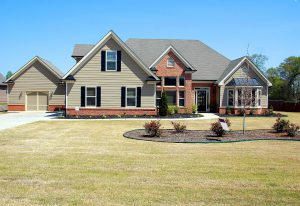Designing your dream house is exciting; planning your very own custom home means the layout and the finishes will be exactly what you want. For many, the design process—choosing colors and materials, and laying out a floor plan that exactly suits your needs—is the fun part of building their new house. However, there are five things you need to consider before you even get to start designing.
The Building Lot
You need to make sure your home design is suitable for your building lot. That includes knowing all of the zoning requirements for your particular neighborhood. Features of the property like the size and shape of the lot, slopes, grades, and views will all need to factor into your design. Also, consider the orientation of your bedrooms and living areas; if you are building in a hot climate, you’ll want those to face south, to stay cool. In cooler climates, face those rooms north, in order to provide sun to warm those rooms naturally.
The Cost
All of the little things you’d love to include in your new home can add up to a lot of money. Before you start adding all the little parts luxuries and design elements you’ll fall in love with, set a strict budget. Once you have a firm number you won’t exceed, then you can start looking at your priorities; what is a need and what is a want?
You need to decide what will add not only to your aesthetic and your family’s comfort, but also your budget. While you want to design and build a quality home that has value, you also don’t want to blow your budget on unnecessary expenses. Choose building materials and finishes that are not only good quality, but are also a good value.
Septic or Sewer
If your building lot can connect to the city sewer system, that’s often a good choice. However, if that isn’t an option, you’ll need a wastewater treatment system. That generally involves a septic system, either an anaerobic or aerobic system. While the septic tank is usually installed after the house is built, you should still have the location of it planned in advance. If your building location needs a septic system, consult with a professional to find out what is right for your future home.
Solar or Grid Power
You should also decide how you’re powering your home before you start installing anything. While you absolutely have the option of relying solely on grid power, there are quite a few rebates and tax credits available now for installing a solar system for your home. Even if your location can connect to the power grid, it can still pay to go solar. While it may cost quite a bit upfront, it can pay off in the long term, and increase your home’s overall value.
Design with Expansion and Contraction in Mind
Your family won’t always be exactly the way it is now. If you are just starting out, design your home with a growing family in mind. If you plan to stay in your home for a long time, plan for when the kids grow up and leave. Designing rooms that have flexibility will allow your home to grow and change with you. It will also make it easier to sell the home when you’re ready to make that change.
Designing your own home is an opportunity to customize your home to be exactly as you’ve always dreamt it. However, there are some important logistic concerns to plan out first, before you start choosing flooring and countertops. Take the time to make these choices carefully to ensure your home will last.

